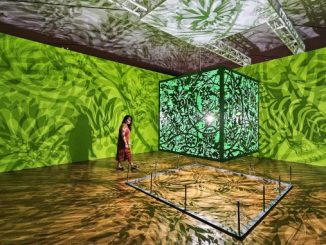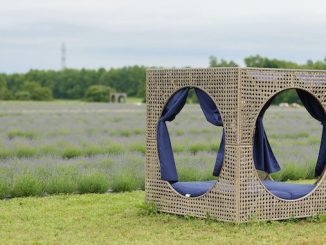The city has given the green light for museums to reopen and if there is anything we’ve missed is an escape into the world of thought-inspiring art. While some of us have been slowly gaining the confidence to venture out, the Aga Khan Museum offers an ideal way to get our arts and culture fix with all the recommended safety protocols in place. The location is also easily accessible and the grounds include a beautiful oasis park space that makes this a worthy outing. As the museum’s doors reopen this weekend, it will also offer visitors the chance to explore the new Sanctuary exhibition along with access to the permanent collections.

The new exhibition features the works of 36 international contemporary artists representing 22 countries, including Ai Weiwei, Brendan Fernandes, and Mona Hatoum, exploring the theme of Sanctuary and how it relates to immigration in the context of conflict, mass migration, climate change, and economic upheaval. “You look at the amount of displacement in the world today and in the past and how people had to flee for political or other reasons,” said Henry Kim, Museum Director and CEO. “What’s amazing was not only the need to get out of a country but also the places and countries that people end up going to.”

The entranceway to the exhibition gives visitors a sense of the scale of migration and sanctuary needed. The whole question of migration and sanctuary is very much alive in today’s world. The Syrian conflict, for example, had 12 million people displaced from one country alone. “The act of giving sanctuary is one of the most noble and important actions by people and a nation,” said Kim. “Basically, it’s saying we’re letting you into our country and this is a safe place. This is what we’re trying to highlight. The number of countries in the past 1500 years that are willing to open up their doors and accept people who they may not know whatsoever speaks a lot to the nature of that country is incredible.” By the way, if you didn’t know, Toronto became the first municipality in Canada to declare itself a “Sanctuary City” in 2013.
What was unexpected in this exhibition is the medium in which the artists’ stories that reflect their personal views, responses, heritage, and experiences were translated onto hand-woven wool carpets. Each 4-by-6-ft piece was made by artisans in Lahore, Pakistan using centuries-old techniques. The exhibition can be explored with the interactive guide with mobile devices (QR Codes available to scan) with more detailed explanations. What also was unexpected is how some of the works are displayed — on the floor with no barriers. Not only does the space encourages one to pause and think about physical distancing, but we were told it was perfectly okay to step on and to walk across.
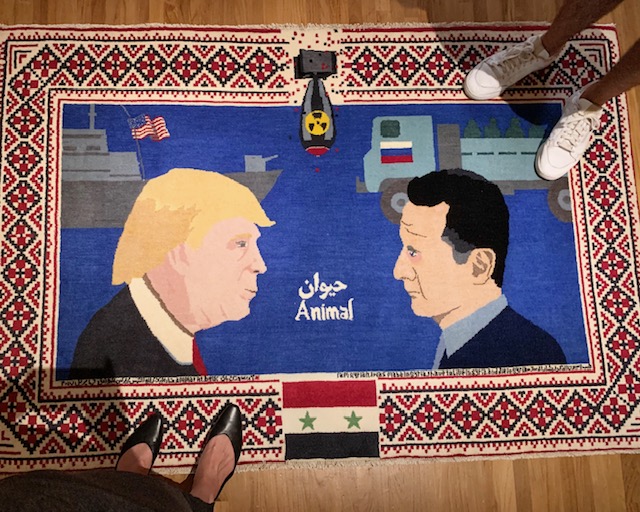
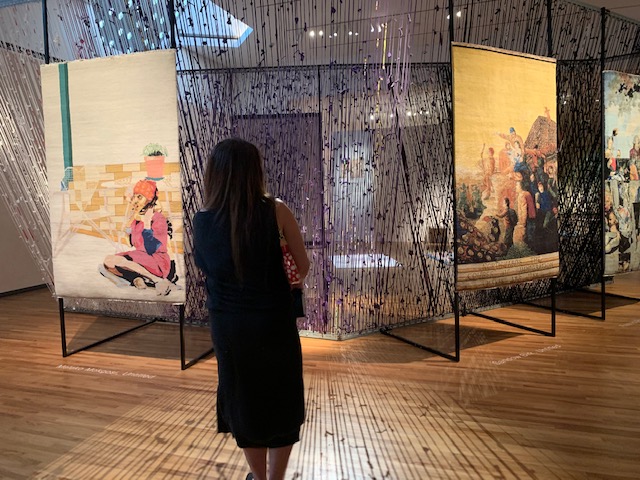

While the exhibition explores this concept of sanctuary it also takes asks, “What does sanctuary mean to you?” With what we’re experiencing now, this concept is more relevant than ever as we find comfort in our own spaces, both mentally and physically, whether it’s being in the backyard, on the front porch, or walking on a nearby trail. “People have been seeking places where they can find inner peace and that is what we’re also looking at with this exhibition,” said Kim. Each artist reflects their own notion of sanctuary either finding it personally or where they felt sanctuary. What’s interesting to note is this exhibition was conceived two years ago and was intended to open the very week the city was ordered to close down due to Covid19. As the city begins to lift restrictions it’s a time when people are yearning to find their sanctuary in places that they’ve missed and loved, or maybe haven’t had a chance to visit before for lack of time in the past – places where they can venture and explore safely.
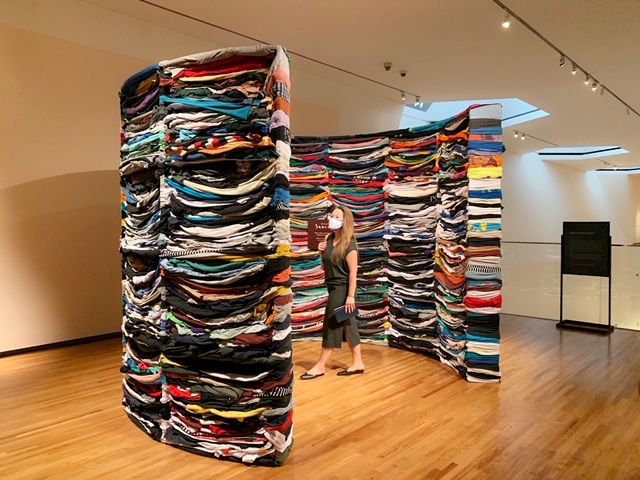
What the Museum also felt important was creating visual structures that were also sustainable. An important element to the museum not only for this exhibition but how they can work with repurposing materials in the future. Kim noted that so often art installations use materials once – they are built and then torn down but they’ve tasked themselves to find ways to reuse items creatively and thoughtfully. Artist Azra Akšamija created the flow with the use of recycled materials complete with an immersive sanctuary made with over 7000 T-shirts.
In addition to the new exhibition, the Museum launched an interactive installation with the public. What’s Your Sanctuary? will continue to invite everyone to share their photos and video submissions of how and with whom people have found sanctuary during the COVID-19 lockdown. The installation that represents creativity, optimism, and global unity is on view in The Bellevue Room within the Museum as well as online with people across Canada and globally.
Another captivating exhibition is found as visitors enter the Museum. Don’t Ask Me Where I’m From is a collaboration between the Aga Khan Museum and Benetton’s Fondazione Imago Mundi. 15 international artists use their chosen art form to share how they’ve navigated between cultures and the realities of past, present, and future.
Not to be missed is the impressive Wagner Garden Carpet located within the permanent collection on the main floor. On loan from the Burrell Collection in Glasgow, Scotland, it is one of the oldest known Persian carpet masterpieces and one of the grandest we’ve seen. The 17th-century piece reveals a “paradise” garden that is quite remarkable to see in person. It can be viewed up close but the second level bird’s eye view gives a worthy perspective.
The Aga Khan Museum is set to reopen its doors this coming Saturday, June 27, 2020, with a pay-what-you-can admission until September 7th, 2020. A limited number of daily visitors and timed-entry apply. Online ticket purchases are encouraged to secure entry times — although on-site ticket sales will be available but limited. All galleries within the museum, the Shop, Cafe, and Diwan Restaurant will follow provincial health and safety guidelines along with enhanced measures for staff, visitors, and volunteers inside the building.
Full details can be found on the Aga Khan Museum website.



